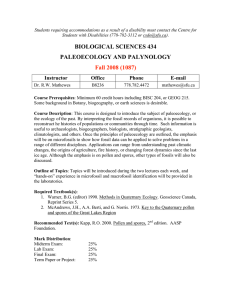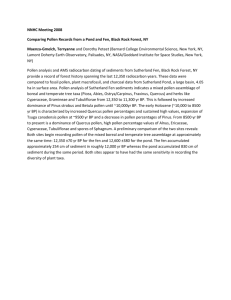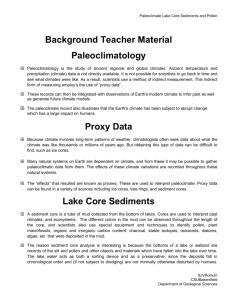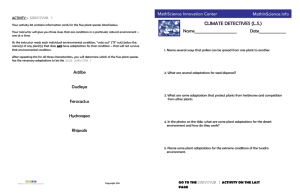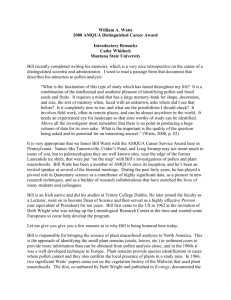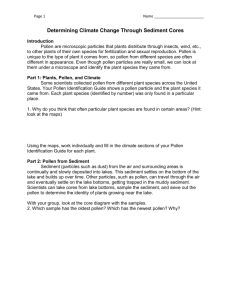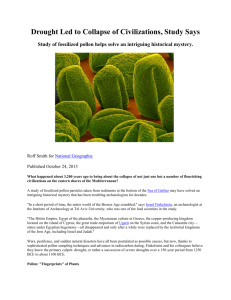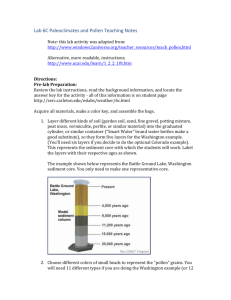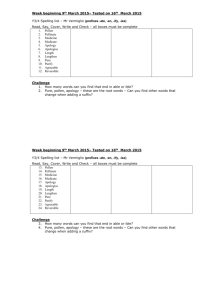Virtual Paleoecology: From Sediment Sampling to Pollen Analysis in
advertisement
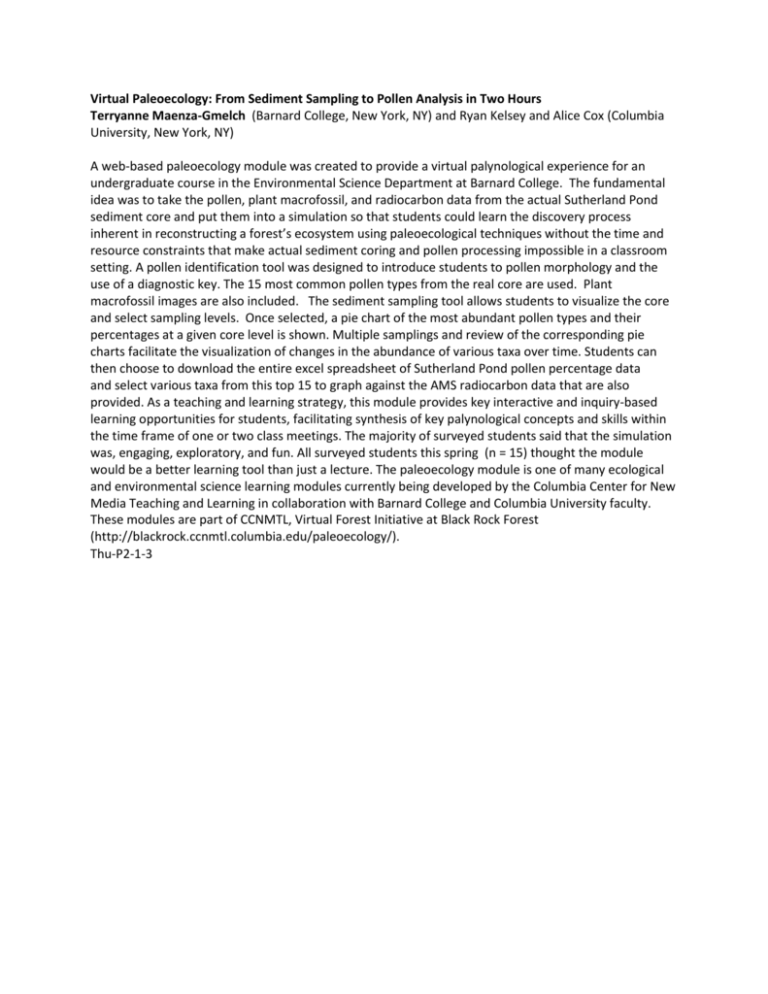
Virtual Paleoecology: From Sediment Sampling to Pollen Analysis in Two Hours Terryanne Maenza-Gmelch (Barnard College, New York, NY) and Ryan Kelsey and Alice Cox (Columbia University, New York, NY) A web-based paleoecology module was created to provide a virtual palynological experience for an undergraduate course in the Environmental Science Department at Barnard College. The fundamental idea was to take the pollen, plant macrofossil, and radiocarbon data from the actual Sutherland Pond sediment core and put them into a simulation so that students could learn the discovery process inherent in reconstructing a forest’s ecosystem using paleoecological techniques without the time and resource constraints that make actual sediment coring and pollen processing impossible in a classroom setting. A pollen identification tool was designed to introduce students to pollen morphology and the use of a diagnostic key. The 15 most common pollen types from the real core are used. Plant macrofossil images are also included. The sediment sampling tool allows students to visualize the core and select sampling levels. Once selected, a pie chart of the most abundant pollen types and their percentages at a given core level is shown. Multiple samplings and review of the corresponding pie charts facilitate the visualization of changes in the abundance of various taxa over time. Students can then choose to download the entire excel spreadsheet of Sutherland Pond pollen percentage data and select various taxa from this top 15 to graph against the AMS radiocarbon data that are also provided. As a teaching and learning strategy, this module provides key interactive and inquiry-based learning opportunities for students, facilitating synthesis of key palynological concepts and skills within the time frame of one or two class meetings. The majority of surveyed students said that the simulation was, engaging, exploratory, and fun. All surveyed students this spring (n = 15) thought the module would be a better learning tool than just a lecture. The paleoecology module is one of many ecological and environmental science learning modules currently being developed by the Columbia Center for New Media Teaching and Learning in collaboration with Barnard College and Columbia University faculty. These modules are part of CCNMTL‚ Virtual Forest Initiative at Black Rock Forest (http://blackrock.ccnmtl.columbia.edu/paleoecology/). Thu-P2-1-3
